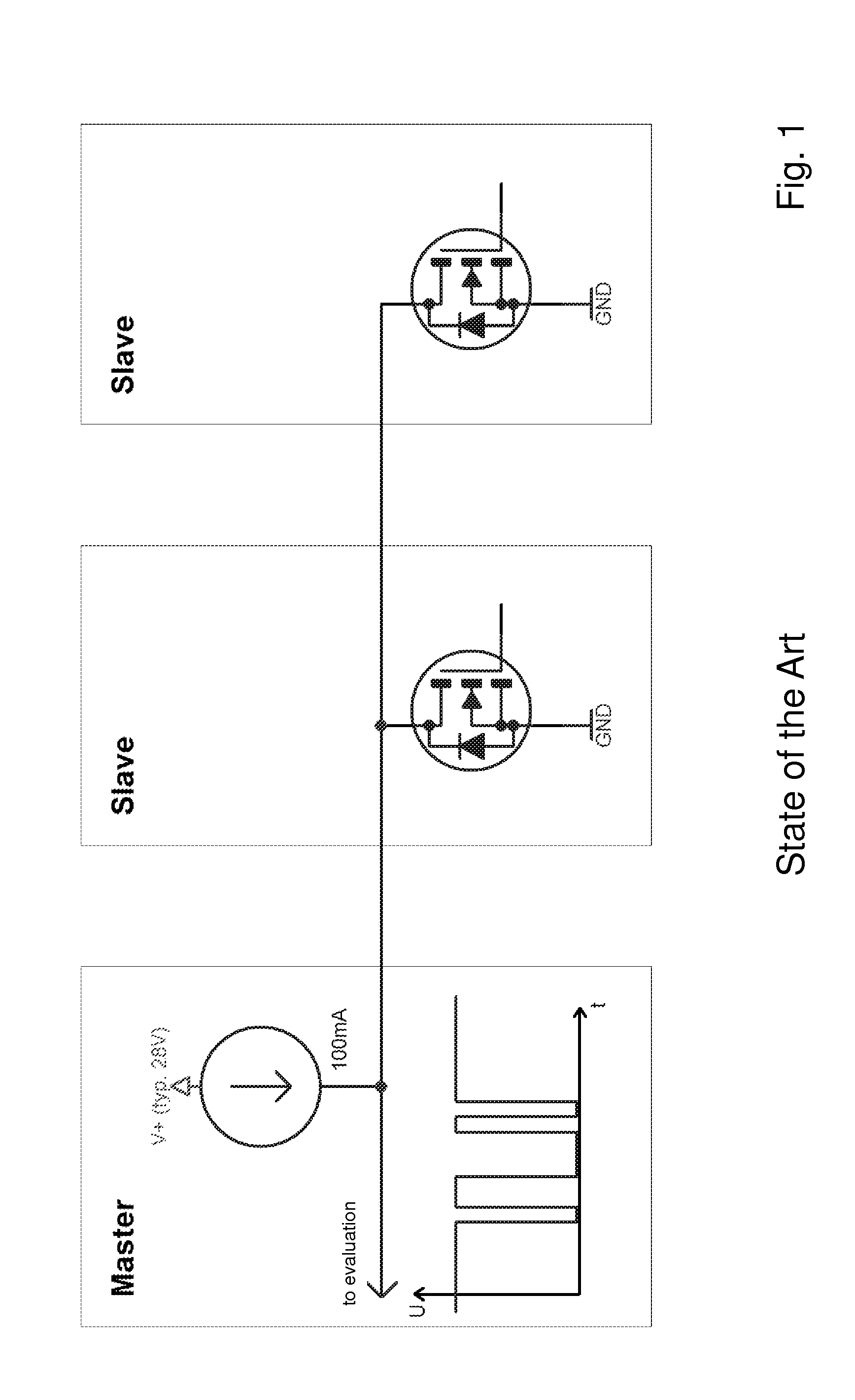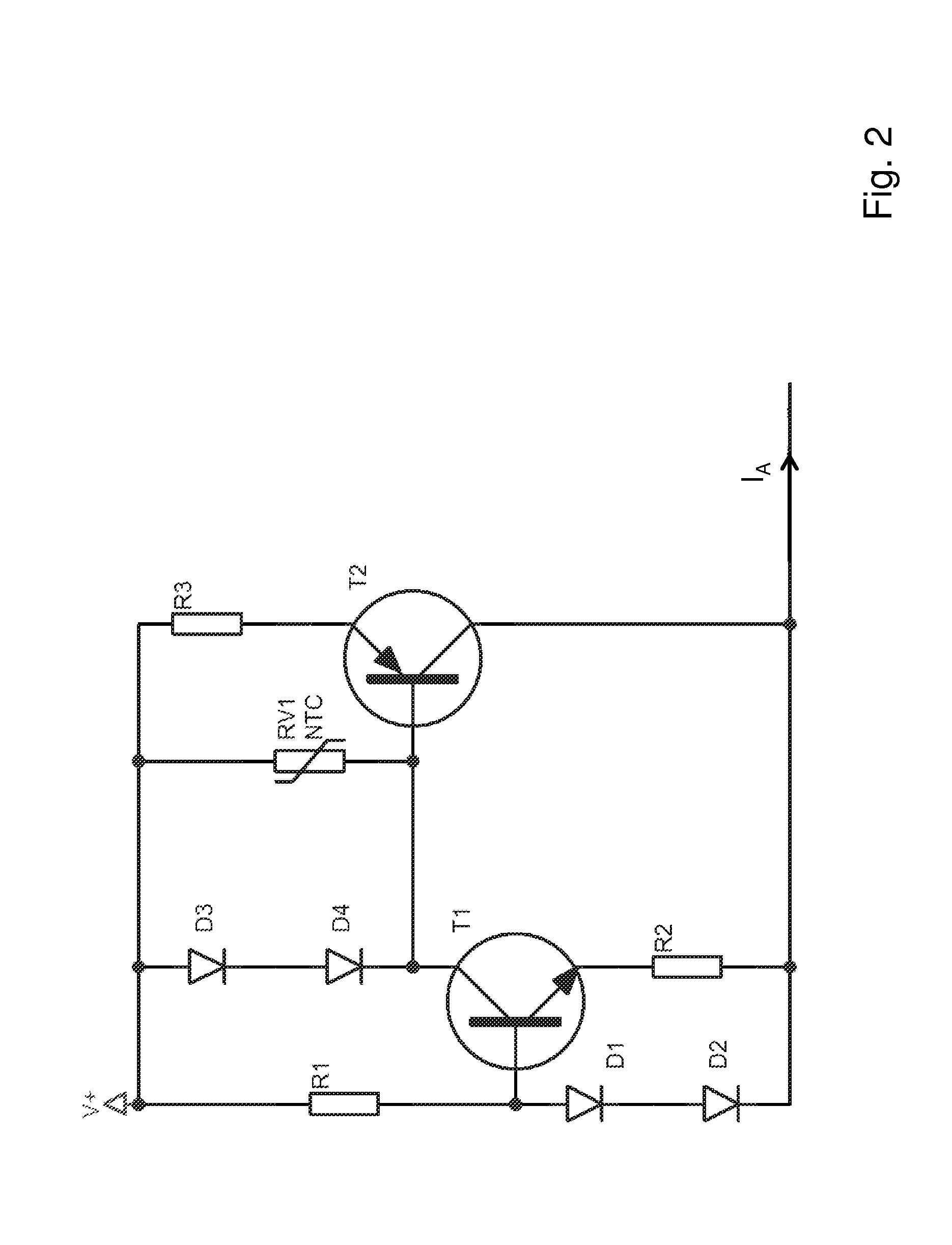Power source
a power source and power supply technology, applied in the direction of electrical variable regulation, process and machine control, instruments, etc., can solve the problems of high load only in the case of a fault, power loss must be discharged via cooling surfaces or heat sinks, and often only occurs the maximum power loss of the transistor, so as to prevent overheating of the transistor, reduce power loss, and increase the temperature of the transistor
- Summary
- Abstract
- Description
- Claims
- Application Information
AI Technical Summary
Benefits of technology
Problems solved by technology
Method used
Image
Examples
Embodiment Construction
[0029]FIG. 1 shows a schematic structure of a response bus and a typical voltage curve during data transmission in an IBIS vehicle bus. More details can be found in the introductory section of the description.
[0030]FIG. 2 shows an exemplary embodiment of a power source according to the invention. The power source is connected to a supply voltage V+ and supplies an output current IA. The output current IA essentially flows through a first resistor R3 that is connected to the voltage supply V+ and the emitter of a first bipolar transistor T2. The first transistor T2 is designed as a pnp transistor. A temperature-dependent resistor RV1 is connected in parallel to the first resistor R3 and the emitter-base section of the first transistor T2. In turn, a series circuit of two diodes D3 and D4 is connected to the temperature-dependent resistor. The base of the first transistor T2 is connected to the collector of a second bipolar transistor T1. The emitter of the second transistor T1 is con...
PUM
 Login to View More
Login to View More Abstract
Description
Claims
Application Information
 Login to View More
Login to View More - R&D
- Intellectual Property
- Life Sciences
- Materials
- Tech Scout
- Unparalleled Data Quality
- Higher Quality Content
- 60% Fewer Hallucinations
Browse by: Latest US Patents, China's latest patents, Technical Efficacy Thesaurus, Application Domain, Technology Topic, Popular Technical Reports.
© 2025 PatSnap. All rights reserved.Legal|Privacy policy|Modern Slavery Act Transparency Statement|Sitemap|About US| Contact US: help@patsnap.com



